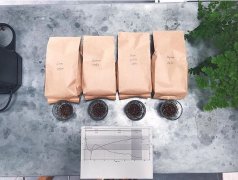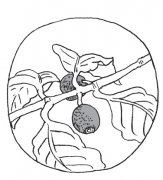Decaf coffee is good or bad "Swiss water treatment method"
It is difficult to evaluate decaf, because decaf processed with real high-quality beans is not common on the market, and its roasting and brewing needs are different from those of ordinary beans, so it is easy to make mistakes, so the taste is difficult to determine. The only one who was more impressed was drinking in California in the United States a few years ago. After the author drank it, the feeling at that time was empty and boring, like baked bread and steamed fish.
The current low-cause processing technology has at least three shortcomings.
To some extent, coffee treatment affects quality more than soil. Farmers in Indonesia, Vietnam and other places lack treatment technology, and the coffee produced is vulnerable to environmental pollution. I still remember that a farmer in Colombia said that he was studying the effect of prolonged air-drying on the taste of coffee. Low-cause processing is to put these carefully regulated and air-dried coffee beans back into the water tank! What's more, it is conceivable that the jar of water (saturated liquid, green coffee extract) has been soaked in other batches of raw coffee beans from other places. There is no comment on Swiss Water's official website. It's like thawing beef, mutton and fish with the same basin of water. Meticulous taste (delicate), may become mediocre. However, there are also coffee that benefits from this process, such as the well-known "heavy flavor" Indonesian beans: after soaking in saturated liquid, the unpopular herbal flavor will be neutralized, and the coffee will become smooth to the throat.
Indonesian beans are blessed by soaking.
It takes a lot of experience to roast coffee with low-caffeine treatment. The raw beans are smoother and darker when they are soaked and then dried. Under the same firepower, it will go to "explosion" more quickly, but the sound of explosion is deeper because of the high water content of beans. The interval between "first explosion" and "second explosion" (note: about 210℃ to 220℃) is also relatively short. Therefore, those who are inexperienced or are not good at baking with the five senses will often stir-fry.
Important Notice :
前街咖啡 FrontStreet Coffee has moved to new addredd:
FrontStreet Coffee Address: 315,Donghua East Road,GuangZhou
Tel:020 38364473
- Prev

Selection and preservation of coffee beans: don't blindly believe in famous brand imported coffee beans
Professional barista communication please pay attention to the coffee workshop (Wechat official account cafe_style) do not superstition famous brand imported coffee beans although the freshness of coffee beans is so important that we strongly recommend that every coffee lover can roast at home by himself, but undeniably, not everyone has the conditions or time to bake at home; in addition, many novice friends
- Next

What are the naming rules for commercial comprehensive coffee names? -"Scientific interpretation of the Secrets of Coffee"
Professional barista communication Please pay attention to the coffee workshop (Wechat official account cafe_style) the product name is an important basis for consumers to judge when buying, if it causes misunderstanding, it will cause great problems. When using a trade name, we must first investigate whether there is any infringement on other people's trademark rights. And, according to the fair competition regulations on the labelling of general concentration coffee and instant coffee
Related
- Beginners will see the "Coffee pull flower" guide!
- What is the difference between ice blog purified milk and ordinary milk coffee?
- Why is the Philippines the largest producer of crops in Liberia?
- For coffee extraction, should the fine powder be retained?
- How does extracted espresso fill pressed powder? How much strength does it take to press the powder?
- How to make jasmine cold extract coffee? Is the jasmine + latte good?
- Will this little toy really make the coffee taste better? How does Lily Drip affect coffee extraction?
- Will the action of slapping the filter cup also affect coffee extraction?
- What's the difference between powder-to-water ratio and powder-to-liquid ratio?
- What is the Ethiopian local species? What does it have to do with Heirloom native species?

